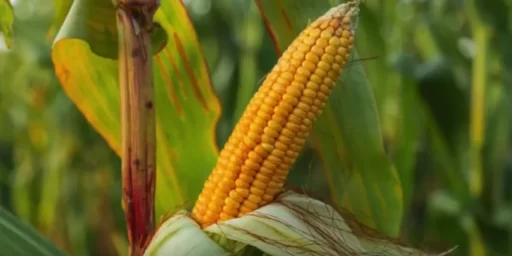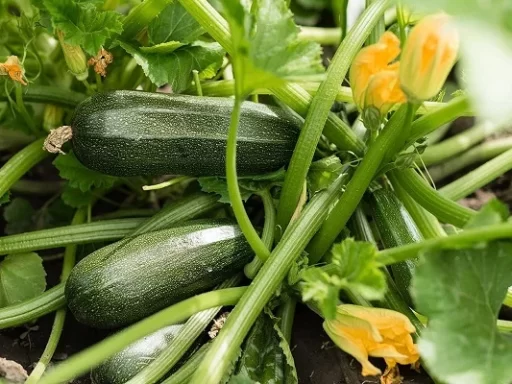Growing corn in your garden can be incredibly rewarding, but achieving those full, kernel-packed cobs that we all love can be challenging without proper pollination. If your corn isn’t producing as many kernels as expected, the key issue likely lies in poor pollination. This guide will walk you through the steps to ensure successful corn pollination, resulting in a bountiful, delicious harvest.
Understanding Corn Pollination Basics
Corn, though often thought of as a vegetable, is actually a type of grass. Like other grasses, corn relies on wind for pollination. Corn plants produce separate male and female flowers. The male flowers, known as tassels, sit atop the plant and release pollen that drifts down to pollinate the female flowers, which eventually form the corn cobs. The female flowers have silks, thin strands that extend from the cob and are responsible for intercepting pollen. Each strand of silk needs to be pollinated to form a single kernel, so perfect pollination is crucial for a fully-filled cob of corn.
Each corn tassel can produce two to five million pollen grains, which sounds like a lot, but achieving full pollination requires careful attention. For gardeners, this can be tricky because they don’t have the large-scale growing conditions that farmers enjoy. However, with some effort and knowledge, you can improve your pollination success.
Optimize Pollination by Planting in a Block Formation
One of the best ways to improve corn pollination is by planting in a block formation rather than in long rows. Corn is wind-pollinated, and growing in blocks increases the chance of pollen successfully reaching the silks of neighboring plants. When corn is grown in long rows, pollen may drift away from the plants instead of reaching the female silks.
To achieve optimal pollination, plant your corn 14 to 16 inches apart (about 35 to 40 centimeters) in both directions. This setup increases the chances of cross-pollination between plants, which is vital for fully-filled cobs. While farmers may plant thousands of corn plants in large fields, gardeners typically grow fewer plants, so planting in a block helps mimic the dense planting patterns of farms.
Manually Enhance Pollination
If your garden has calm weather conditions, you can help your corn plants by manually shaking the stems to dislodge pollen. When the tassels are at their peak—characterized by rich creamy yellow anthers—shaking the plants will release clouds of pollen that can drift down to the silks below. Repeat this process daily for about two to three days to maximize pollination.
The silks mature a few days later than the tassels, and not all silks on the same cob mature at the same time. Start with the silks at the base of the cob and work your way up, making sure to shake the plants when the silks are most receptive.
Hand Pollinating for Maximum Results
For even better results, you can hand-pollinate your corn. This technique involves detaching a tassel from the top of the plant and gently dusting it over the silks. Ensure that you cover every strand of silk to maximize kernel development. Repeat this process every few days, using fresh tassels each time.

Hand pollination is especially useful in small gardens where natural wind pollination may be limited. By carefully targeting each silk, you ensure that every potential kernel gets fertilized, leading to full, plump cobs.
Keep Corn Well-Watered for Healthier Plants
Corn is a shallow-rooted plant, meaning it requires consistent watering to thrive. If the ground becomes too dry, the silks may not fully emerge, reducing the plant’s ability to capture pollen. To prevent this, water your corn thoroughly at least twice a week during dry spells.
Maintaining proper soil moisture ensures that the silks remain hydrated and receptive to pollen, significantly improving your chances of a bountiful harvest. Additionally, watering helps the corn cobs develop more robustly, leading to juicier and tastier kernels.
When to Harvest Your Corn
After successful pollination, patience is key as you wait for your corn to reach maturity. You’ll know the corn is ready to harvest when the silks turn completely brown and brittle. To check if the corn is ready, gently peel back the husk to expose a few kernels. Pierce a kernel with your fingernail—if the liquid inside is milky and creamy, the corn is ready to pick. If the liquid is clear, give it more time to mature.
Properly harvested corn will deliver that sweet, juicy taste everyone loves, making all the effort in growing and pollinating worth it.
Addressing Common Corn Pollination Issues
Sometimes even the best efforts at pollination don’t yield perfect results. Factors like high temperatures above 90°F (32°C) can reduce pollen viability, which is why it’s recommended to pollinate in the cooler morning hours. If morning isn’t an option, pollinate in the evening to give the pollen the best chance of reaching the silks.
Additionally, if you’ve had trouble with corn pollination in the past, you can experiment with different varieties of corn. Some may be better suited to your local growing conditions and can yield better results with minimal effort.
Conclusion
Growing perfect, kernel-packed cobs of corn in your garden is entirely achievable with the right techniques. Understanding how corn is pollinated and taking steps to enhance the process, whether through planting strategies or manual pollination, will dramatically improve your harvest. By keeping your plants well-watered and pollinating at the right time, you’ll enjoy delicious, fully-filled corn cobs all season long.
Frequently Asked Questions (FAQs)
- What is the best way to ensure proper pollination in corn?
- Planting corn in a block formation and manually shaking the plants to release pollen improves the chances of proper pollination.
- How can I tell when my corn is ready to harvest?
- Corn is ready when the silks turn brown and brittle. You can also test by piercing a kernel—if the liquid inside is creamy, it’s ready to pick.
- Why are my corn cobs not filling out with kernels?
- This is usually due to poor pollination. Hand-pollination or shaking the plants during peak pollination can help solve this issue.
- How often should I water my corn plants?
- Corn should be watered thoroughly at least twice a week, especially during dry periods, to ensure healthy development of the cobs.
- Can I hand-pollinate corn?
- Yes, hand-pollination is a highly effective method for ensuring all silks are pollinated, especially in small garden settings.
- What temperature is best for pollinating corn?
- Pollination is most effective at temperatures below 90°F (32°C). Pollinating in the early morning or evening when it’s cooler will yield better results.
- How far apart should I plant corn for optimal pollination?
- Corn should be planted about 14 to 16 inches (35 to 40 cm) apart in both directions to increase pollination chances.






